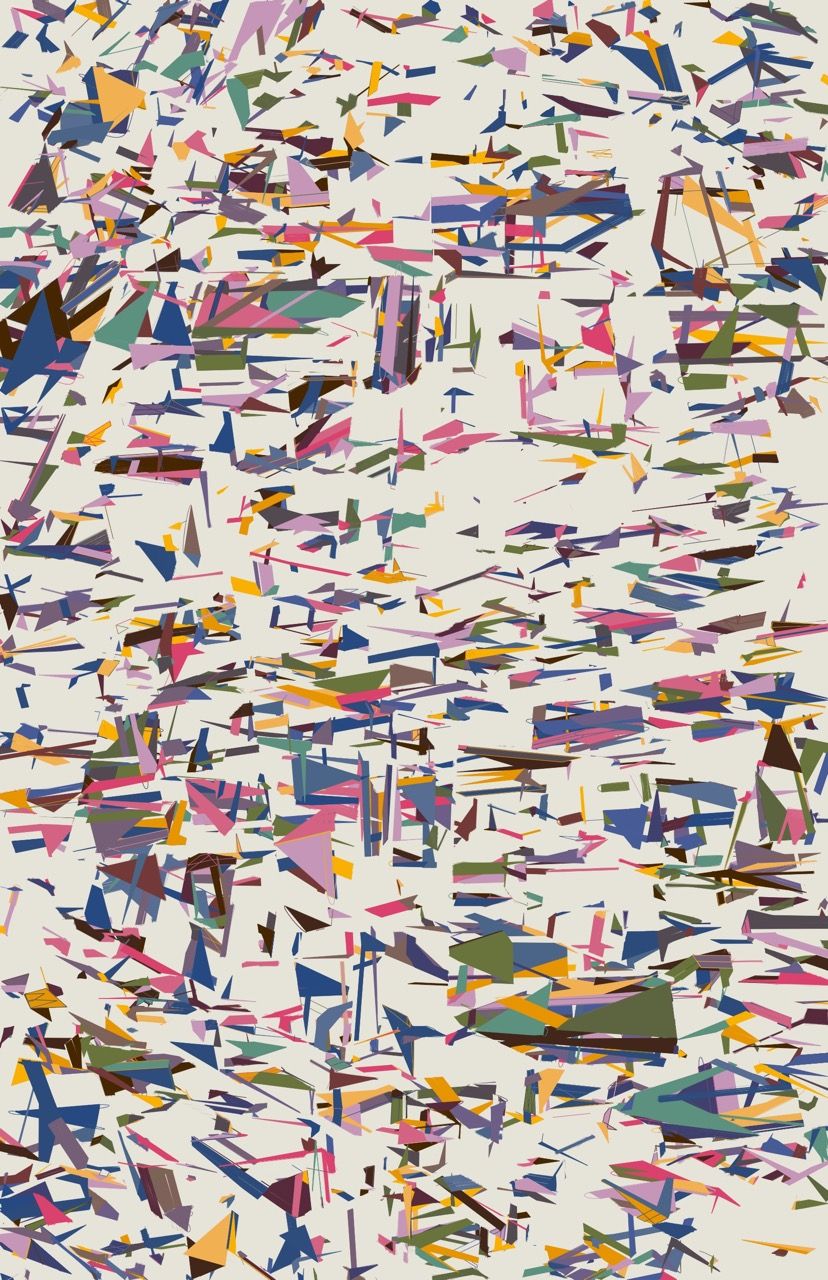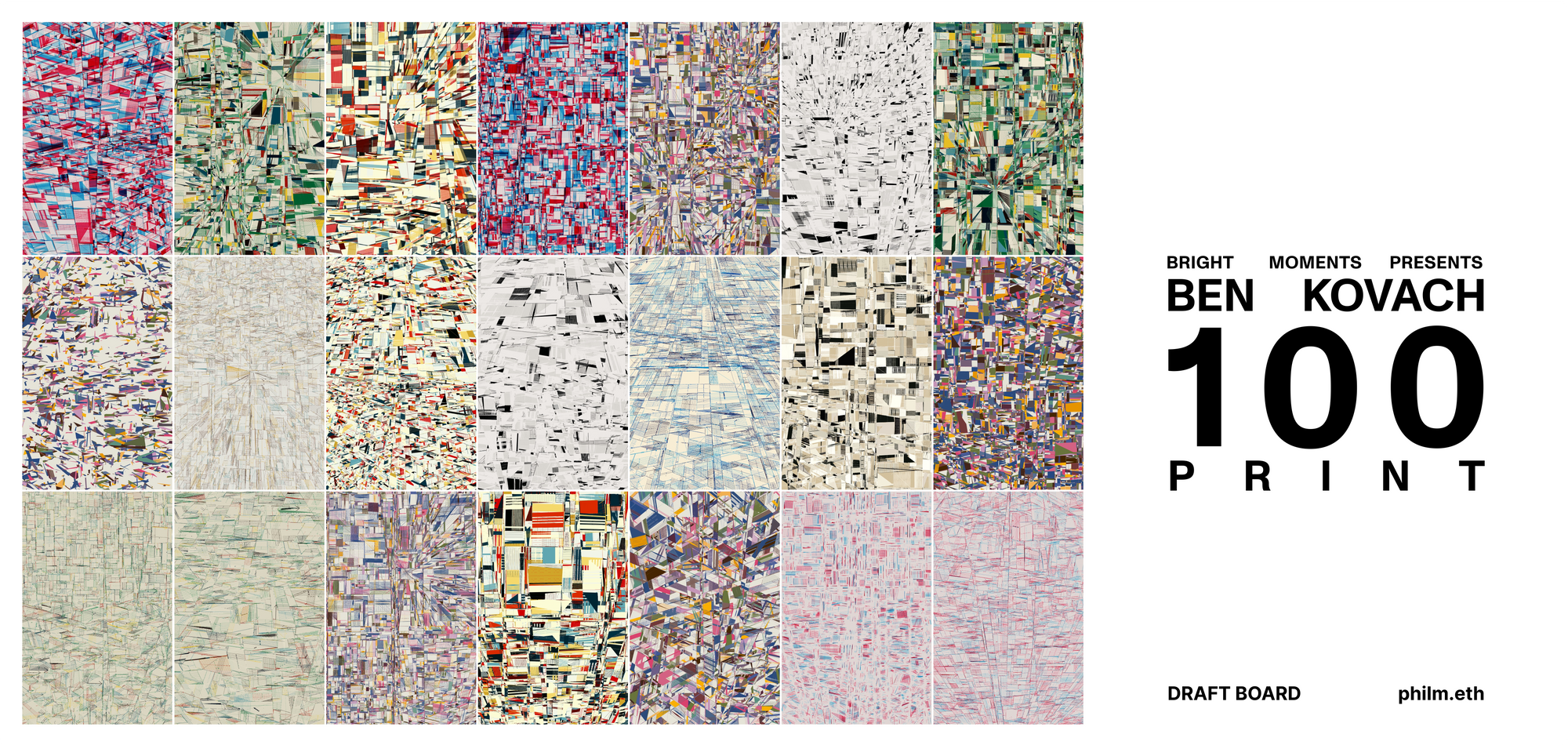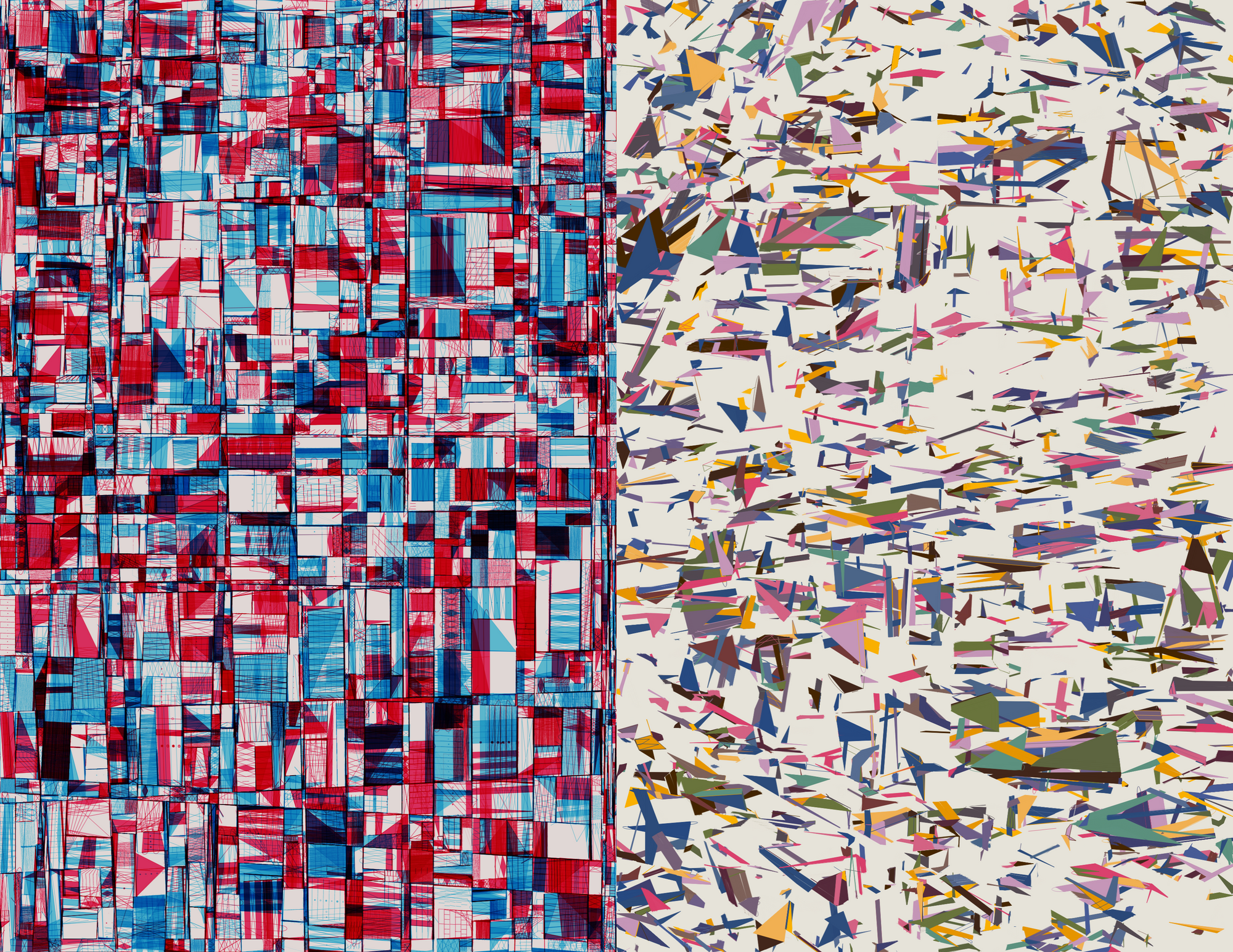My 100 PRINT Draft Strategy
I recently participated in 100 PRINT, an Art Blocks collection created by Ben Kovach. Ben worked with our team at Bright Moments on a new type of drop model for this show; each piece was pre-minted, printed, framed, and installed at the Bright Moments SoHo Gallery. Collectors were invited to select their NFT and associated print in person based on the order of their draft pick, which was purchased in a dutch auction.

The pre-mint & claim method of distribution was devised in response to a pattern I have seen since entering the NFT space. Once a collection has minted out, many pieces are then “flipped” for a quick profit; those with more desirable traits or heightened rarity commanding higher prices. However, randomly minted artwork does not care if you bought into the project at its ceiling or floor price, meaning there can be no guarantee that the most expensive purchases result in the most desirable outputs. 100 PRINT gives meaning to the Dutch auction mechanic by placing more power in the lowered numbered tokens. Buyers who pay more for a ticket have a higher chance of receiving a piece they want; be that an aesthetic favorite, a rare one as defined by its traits, or an emergent grail.
I had draft pick #18 and am sharing my draft strategy here in case others find it interesting or useful in their own selection process.
Curation
I downloaded high-resolution images from the Art Blocks image server and placed them into a Google Drive folder for easy access. I then browsed the images and wrote qualitative comments on the ones that struck my interest.

Tagging
I assembled a curated list of 21 mints that I would be particularly happy with and placed the token IDs and comments into a spreadsheet.

I then used Artacle to capture each token's rarity ranking and relevant attributes. Each mint has 7 traits:
- Arrow party (yes, no)
- Construction (aggressive, methodical)
- Material (none, felt, tungsten)
- Palette (3d glasses, a deep appreciation for mathematics, ceramic, cowboy hat, heavy body acrylic, meep morp, onus, polymer, salt, sunflower)
- Perspective (above, below, four point, six point, mixed)
- Style (cubist dot mosaic, cubist maxima, dot mosaic, maxima, mega bold, minima, wire)
- Time signature (2/4, 3/4, 4/4)
For comparison, here are two very distinct images from the collection and their respective traits:

I also inputted data from the Print Pick leaderboard. Print Pick is a game we designed that allowed players to rank mints against each other and calculated a ranking using the Elo rating system commonly used in competitive chess. The top five picks from the leaderboard as of 5/19/22:

Ranking
To help me identify my tastes, I created several ranking systems based on palettes and specific traits that I found interesting. One example was a "palette ranking", where I first ranked my palettes in order of preference and then ranked the individual mints within each palette.
I also created a "trait composite" attribute that combined the various traits into a single weighted score based on my preference for a specific mint's traits. This acted as a personalized rarity that helped surface interesting mints which I may have missed during my initial review of the set.
To fine-tune these rankings, I recursively updated the weighting of traits and palette rankings based on which mints were rising to the top of my ranking. If I found a mint that was scoring highly but didn't fit my taste, I would reduce the weighting on traits that caused it to rise to the top. I performed this loop dozens of times until I was satisfied with the final ranking.
Community Input
Finally, I put together a Snapshot vote that used quadratic voting to score the mints in my curated set. I granted voting power to anyone who held an Art Blocks, CryptoCitizen, or Berlin Collection NFT. My goal here was to gather community input and identify mints that were interesting to other collectors, but which may not have fit my personal aesthetics.
Six wallets participated in this vote, representing 614 generative NFTs under their collective possession. Not a bad group to have as advisors!
Final Scoring & Selection Process
I combined each of the attributes above into a single composite ranking. In theory, this ranking represented my mint preferences. In reality, it was a useful heuristic to understand what mints I should choose in a tie-breaker scenario.
During the selection process, I kept track of which mints in my curated list were claimed. I removed these images from my Google Drive folder so I could easily flip through the remaining mints and compare them at a glance. I also assembled a shortlist of mints that I found myself returning to.
When it was my turn to mint, 10 of my 21 curated mints had already been selected. Of the 11 remaining, I had four on my shortlist, plus an additional mint that had caught my eye while others were minting.
In the end, I chose #76.

#76 is a winter pane palette with a mixed perspective, maxima style, methodical construction, and 3/4 time signature. #73 is most similar to #82, which was chosen as the 11th pick in the draft.
It also wasn't on my initial draft list. How's that for sticking to the plan?
Conclusion
The process of planning was more valuable than the plan itself. By examining the collection in detail, I was able to identify my unique aesthetic preferences and build my intuition.
The picking window was incredibly short – just five minutes – so it was important to be prepared when the time to choose came. I found it helpful to choose two or three palettes that I would be happy with and compare my top picks from each when making my final decision. These helped create an objective decision that removed some of the emotional aspects of choosing.
Now that my draft is over, I'm open-sourcing my ranking model for others to use. You can find it here.
100 PRINT was a lot of fun and I hope other projects use this draft model for their own generative NFT drops.